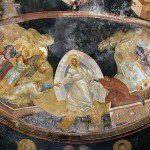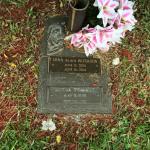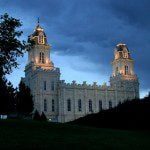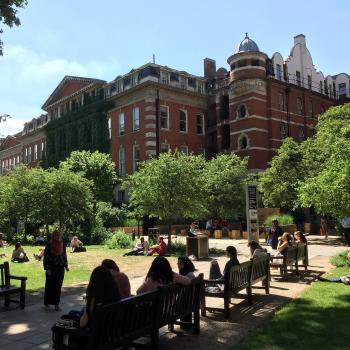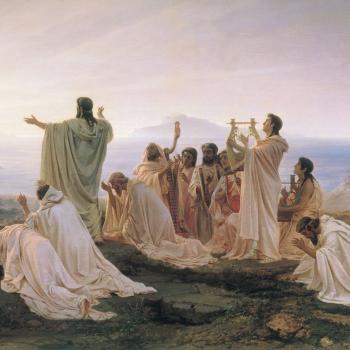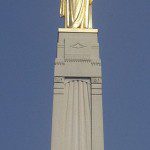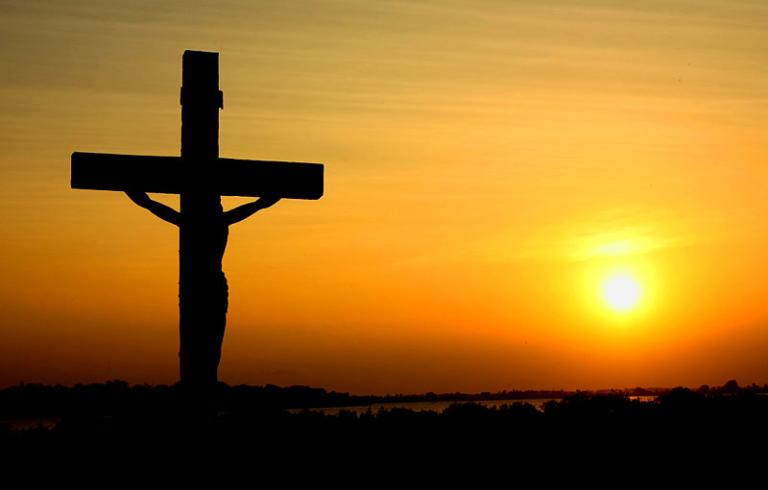
(Wikimedia Commons public domain image
“The Goodness of the Cross and Good Friday: Lessons from Bavaria,” written by John W. Welch
Abstract: It is natural to wonder how the day on which Jesus was crucified could come to be known as Good Friday. In this exploration of the topic, John Welch examines the many events which occurred on that fateful day and the meaning they have for us today.
[Editor’s Note: This article is based on a talk delivered on Good Friday, April 2, 2021, to the German Missions Reunion in Salt Lake City. It has been lightly edited for publication.]
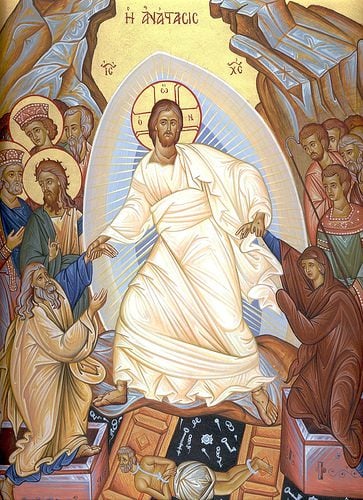
In this image, Christ is pulling Adam (on the left) and Eve (on the right) from their tombs. Beneath his feet, Satan lies bound and you can see the broken doors of the gates of Hell (and parts of the shattered lock mechanism of those gates).
We are entering into the Easter weekend. On the whole, apart from Easter-egg hunts, “low-church” American Protestants — and American Latter-day Saints, whose culture basically emerged from “low-church” American Protestantism — don’t pay much attention to Good Friday or Holy Saturday, and our Easters themselves are too often somewhat perfunctory. That’s unfortunate, in my opinion, and I’m pleased to see that a movement seems to have arisen within the Church of Jesus Christ of Latter-day Saints — it was certainly noticeable at last weekend’s General Conference of the Church. Happily, an English-born neighbor brought over some hot cross buns just a few minutes ago, as she has done for a number of years now. Easter weekend is, thus, officially underway.
In honor thereof, I offer a poetic meditation on the event that today’s holiday commemorates. It may require two or three slow, careful readings :
“Good Friday,” by Christina Rosetti
Am I a stone, and not a sheep,
That I can stand, O Christ, beneath Thy cross,
To number drop by drop Thy blood’s slow loss,
And yet not weep?Not so those women loved
Who with exceeding grief lamented Thee;
Not so fallen Peter, weeping bitterly;
Not so the thief was moved;Not so the Sun and Moon
Which hid their faces in a starless sky,
A horror of great darkness at broad noon –
I, only I.Yet give not o’er,
But seek Thy sheep, true Shepherd of the flock;
Greater than Moses, turn and look once more
And smite a rock.
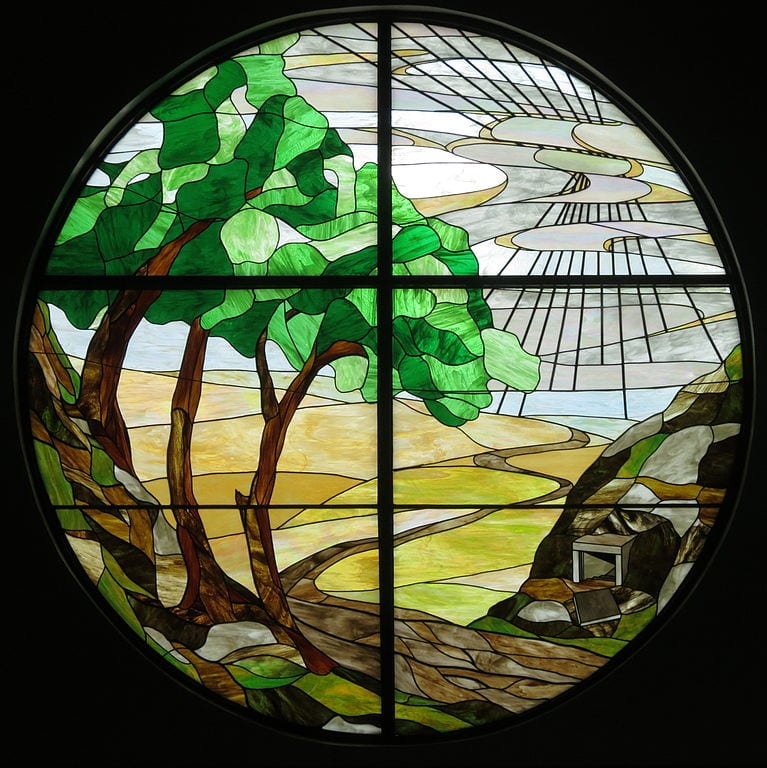
(Wikimedia Commons public domain image)
Here are some of the Easter-related columns that I used to publish in the Deseret News, one or two of which may be of interest to my one or two readers:
“The mysterious 40-day ministry of Jesus after Easter”
“Can modern people believe in the Resurrection of Jesus Christ?”
“Evidence of Jesus Christ’s resurrection”
“Life after death is a joyful fact”
“The days leading up to Easter Sunday”
“Palm Sunday led to liberation from death”
“The gospel truly brings joyful news”
“Christ’s resurrection was a witnessed fact, not a later fantasy”
“In submission is our salvation”
“A ‘great cloud of witnesses’ at Easter”
“Thomas Jefferson, Benjamin Franklin and C.S. Lewis on the hope of Easter”
I’ve also written at least one Easter-related piece for Meridian Magazine:
“An Ancient Witness of the Savior We Don’t Often Hear About”
And here are some relevant specimens from the biweekly column that my late (and much missed) friend and colleague Bill Hamblin and I used to write for the Deseret News:
“Holy Week aids Easter reflections”
“The holy light of Easter in Jerusalem”
“The challenge of the empty tomb”
“Choosing the date of Easter and how Western, Eastern celebrations are on the same day this year” (2017)
Rebecca Reynolds Lambert wrote the Interpreter Foundation’s Easter message for last year, 2022, but I somehow omitted it from yesterday’s list.
“Our Faithful Lord: Passover to Easter”
Abstract: Studying the origins and traditions of Passover enriches our understanding of Easter. We can deepen our own worship and expand our ritual memory by an acquaintance with these traditions. Latter-day Saints possess unique understandings that further illuminate the constancy and plenitude of the Lord’s covenantal relationship with us.
Additionally, I want to share with you an excellent article by a different Peterson. He too used to do columns (irregularly) for the Deseret News, and in this column he actually dared — the French term lèse-majesté comes to mind — to cast a bit of doubt on something that I had written in “The Words of Easter,” above:
“Think Easter’s symbols are all pagan? Many are more Christian than you think”
And I like this New York Times article, which was published just yesterday:
“A Naïve Reading of the Gospels May Be Just What Christianity Needs”
And this short essay is worth a look:
“America’s Favorite Prophet: Elijah. He’s not just for Passover anymore.”
In his concluding remarks during the final session of last week’s General Conference, President Russell M. Nelson declared that “Easter Sunday . . . is the most important religious observance for followers of Jesus Christ. The main reason we celebrate Christmas is because of Easter.” (emphasis in the original). I confess that I’ve gone back in forth in my mind for years now — anyway, for at least one or two minutes annually — about whether Christmas or Easter is the more theologically significant holiday. As President Nelson says, we celebrate Christmas because of Easter. But then, on the other hand, Easter would not have happened had the Son of God not taken a human body upon himself in the Incarnation, which occurred at Christmas. It’s a chicken-and-egg conundrum. Here, though, is an article from the Jesuit magazine America that endorses President Nelson’s judgment. It was originally published in 1962:
Daniel J. O’Hanlon, S.J.: “Easter—not Christmas—should be the most important Christian holiday”


